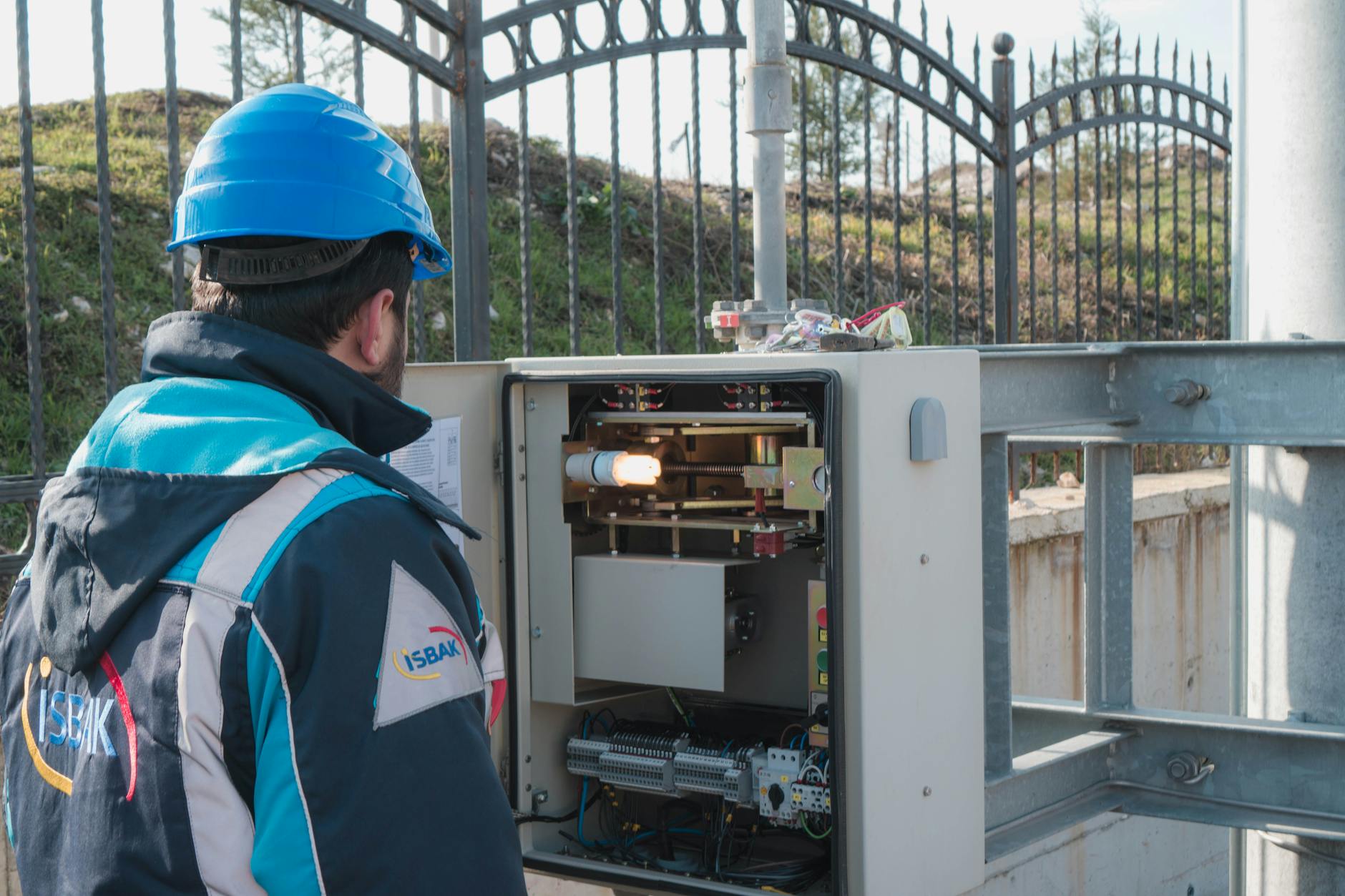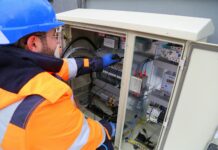
Electrical Safety: Hazards and GFCI Purpose
Introduction
Electrical safety is a paramount concern in both residential and industrial settings. This article aims to shed light on the hazards associated with electrical systems and the specific purpose of Ground Fault Circuit Interrupters (GFCIs) in ensuring a safe electrical environment.
Electrical Hazards
Understanding electrical hazards is crucial for preventing accidents and ensuring the safety of individuals working with or around electrical systems. The main hazards include:
- Electric Shock
- Explanation of how electrical shock occurs
- Effects of electric shock on the human body
- Electrical Fires
- Causes of electrical fires
- Importance of preventing electrical fires through safety measures
- Arc Flashes
- Definition of arc flashes
- The dangers posed by arc flashes and ways to prevent them
- Overloads and Short Circuits
- Explanation of overloads and short circuits
- The risks associated with overloads and short circuits
- Exposed Wiring
- Dangers of exposed wiring
- Methods for preventing and addressing exposed wiring issues
Ground Fault Circuit Interrupters (GFCIs)
GFCIs play a crucial role in mitigating electrical hazards, especially in areas where water is present. This section delves into the purpose and functionality of GFCIs:
- Definition of GFCI
- Explanation of what a GFCI is and how it differs from a circuit breaker
- How GFCIs Work
- Overview of the sensing mechanism in GFCIs
- Real-time examples of GFCI response to ground faults
- Locations Requiring GFCIs
- Identification of areas where GFCIs are mandated
- The importance of GFCIs in kitchens, bathrooms, outdoor outlets, and other specific locations
- Installation and Maintenance
- Proper installation guidelines for GFCIs
- Importance of regular maintenance to ensure GFCI functionality
- Benefits of GFCIs
- Reduction of electric shock incidents
- Prevention of electrical fires through rapid response to ground faults
Integrating Electrical Safety Measures
The article explores how a holistic approach to electrical safety, combining hazard awareness and the implementation of GFCIs, contributes to a safer environment. This includes:
- Employee Training
- The significance of training individuals on electrical safety practices
- How informed personnel contribute to a safer workplace
- Regular Inspections
- The importance of routine inspections for identifying potential hazards
- How proactive inspections prevent electrical accidents
- Using Protective Gear
- The role of personal protective equipment in preventing electrical injuries
- Types of protective gear suitable for different electrical tasks
- Adherence to Electrical Codes
- The relevance of following electrical codes and regulations
- Consequences of non-compliance with safety standards
Electrical Safety: Hazards and GFCI Purpose1. Electrical Hazards: Electrical hazards pose significant risks and can lead to injuries, fires, or even fatalities. Understanding and mitigating these hazards are crucial for maintaining electrical safety.- Electric Shock:
- Occurs when the body becomes part of an electric circuit.
- Can lead to severe injuries or death.
- Electrical Fires:
- Result from faulty wiring, overloaded circuits, or damaged electrical equipment.
- Can spread rapidly and cause extensive damage.
- Arc Flash:
- A release of energy caused by an electric arc.
- Can result in burns, injuries, or fatalities.
- Overloaded Circuits:
- Plugging too many devices into a single outlet or circuit.
- Causes overheating and increases the risk of fire.
- Faulty Wiring:
- Damaged or poorly installed wiring.
- Increases the risk of electrical fires and shocks.
2. GFCI (Ground Fault Circuit Interrupter) Purpose: GFCIs are electrical safety devices designed to protect against electric shock by quickly shutting off power to a circuit when it detects a ground fault.- How GFCIs Work:
- GFCIs monitor the flow of current between the hot and neutral wires.
- If there is an imbalance, indicating a ground fault (current leakage), the GFCI trips and cuts off power.
- Key Purposes:
- Preventing Electric Shock:
- GFCIs provide protection against electric shock, especially in areas where water and electricity may come into contact (bathrooms, kitchens, outdoor outlets).
- Reducing Electrical Fires:
- By quickly interrupting the circuit in the event of a ground fault, GFCIs help prevent overheating and reduce the risk of electrical fires.
- Protecting People and Property:
- GFCIs are crucial in areas where electrical equipment is used near water sources, as water increases the risk of electric shock.
- Preventing Electric Shock:
- GFCI Requirements:
- Building codes often mandate the installation of GFCIs in specific locations, such as kitchens, bathrooms, outdoor outlets, and garages.
- Regular testing of GFCIs is recommended to ensure they are functioning correctly.
- Types of GFCIs:
- Receptacle GFCIs: Installed in electrical outlets.
- Circuit Breaker GFCIs: Installed in the main circuit breaker panel.
3. General Electrical Safety Tips:- Avoid overloading circuits and outlets.
- Regularly inspect and maintain electrical equipment.
- Use extension cords and power strips safely.
- Hire qualified electricians for installations and repairs.
- Keep electrical appliances away from water sources.
- Teach proper electrical safety practices at home and in the workplace.
In summary, understanding electrical hazards and implementing safety measures, including the use of GFCIs, is essential for protecting individuals and property from the dangers associated with electricity. GFCIs play a crucial role in preventing electric shocks and reducing the risk of electrical fires in various settings.Conclusion
In conclusion, prioritizing electrical safety is non-negotiable to prevent accidents, injuries, and property damage. Understanding electrical hazards, integrating GFCIs in specific locations, and adopting a comprehensive approach to safety measures are key components of fostering a secure environment. By prioritizing these measures, individuals and organizations can significantly reduce the risks associated with electrical systems.
Electrical Hazards and Control Measures
Electrical Safety Toolbox Talks
How to Make JSA for Electrical Activity
How to Make HIRA on Electrical Safety?
Frequently Asked Questions (FAQs)
- What are the main electrical hazards to be aware of?
- The main electrical hazards include electric shock, electrical fires, arc flashes, overloads, short circuits, and exposed wiring.
- How do GFCIs work, and where are they required?
- GFCIs detect ground faults and quickly interrupt the flow of electricity to prevent electric shock. They are required in areas with water exposure, such as kitchens, bathrooms, and outdoor outlets.
- Why is employee training essential for electrical safety?
- Employee training ensures that individuals are aware of electrical hazards and know how to use safety measures, reducing the risk of accidents.
- What are the benefits of GFCIs in electrical safety?
- GFCIs reduce the incidence of electric shock and prevent electrical fires by swiftly responding to ground faults.
- How can a holistic approach to electrical safety be implemented?
- A holistic approach involves employee training, regular inspections, the use of protective gear, and adherence to electrical codes and regulations to create a comprehensive electrical safety strategy.
























